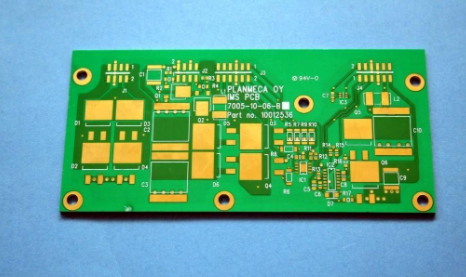Immersion copper is called plated through hole in the production process of circuit board factory, that is, electroless copper plating. The process of copper sinking in the PCB production process of Circuit Board Factory requires a chemical reaction, usually abbreviated as PTH, which is a self-catalyzed redox reaction. Generally, double-sided or multi-layer boardsmust be copper-immersed after drilling is completed.

Copper sinking process for PCB production in circuit board factory
The role of copper sinking is mainly to connect the circuit. On the base material of the non-conductive hole wall, the chemical method-chemical copper is used, because there is electroplating copper behind, and the sinking copper is to provide the base for electroplating copper. Our Shenzhen The circuit board factory is very cautious and careful in the process of producing PCB, and every step is carried out carefully.
The control of the copper sinking process will affect some special boards of PCB, (such as PCB high-frequency board, soft and hard board, thick copper board, impedance board, hole plate in the disk, thick gold board, coil board), of course it is more relevant As far as the quality of our Shenzhen PCB Factory products are concerned, every process is strictly controlled.
Decomposition of copper sinking process: alkaline degreasing-two or three-stage countercurrent rinsing-roughening (micro-etching)-secondary countercurrent rinsing-pre-soaking-activation-secondary countercurrent rinsing-degumming-secondary countercurrent rinsing-copper deposition- Secondary countercurrent rinsing - pickling
Of course, the editor will also tell you in more detail about the copper sinking process in the PCB production of the circuit board factory:
1. The first step is alkaline degreasing:
Alkaline degreasing refers to the removal of oil stains, fingerprints, oxides and dust on the surface of the board; the negative charge on the hole wall becomes a positive charge, which facilitates the adsorption of colloidal palladium in the subsequent process; in general, degreasing and cleaning should follow The rules of the circuit board factory are carried out, and the test is carried out with a heavy copper backlight test.
2. Micro-etching:
Micro-etching refers to removing oxides on the board surface and thickening the board surface to ensure a good bond between the subsequent copper immersion layer and the bottom copper of the substrate; the new copper surface is flexible and can adsorb colloidal palladium well.
3. Pre-soaking:
Pre-soaking is mainly to protect the palladium tank from pollution, because the front tank liquid will contaminate the palladium tank, and the service life of the palladium tank will be prolonged after prepreg, so as to ensure the quality of PCB boards in our circuit board factory.
After the previous alkaline degreasing, the positively charged pore walls can effectively adsorb the negatively charged colloidal palladium particles, which is to ensure the continuity, uniformity and compactness of the subsequent copper precipitation; therefore, the alkaline degreasing and activation are effective The quality of subsequent copper immersion is very important.
5. Degumming:
The debonding is to remove the stannous ions from the colloidal palladium particles, exposing the palladium nuclei in the colloidal particles, which can catalyze the chemical copper precipitation reaction. According to the experience of the circuit board factory, using fluoroboric acid as the debonding agent is A better choice.
6. Immersion copper:
After the above procedures, you can proceed to the last item-chemical copper deposition. Through chemical reactions, the copper deposition process is very important and will seriously affect product quality. Once a problem occurs, it must be a batch problem, even if the test cannot be completed. Put an end to the fact that the final product causes great quality hazards and can only be scrapped in batches. Therefore, according to the experience of the circuit board factory, the copper sink must be operated in strict accordance with the parameters of the work instruction and strictly control each operation step.